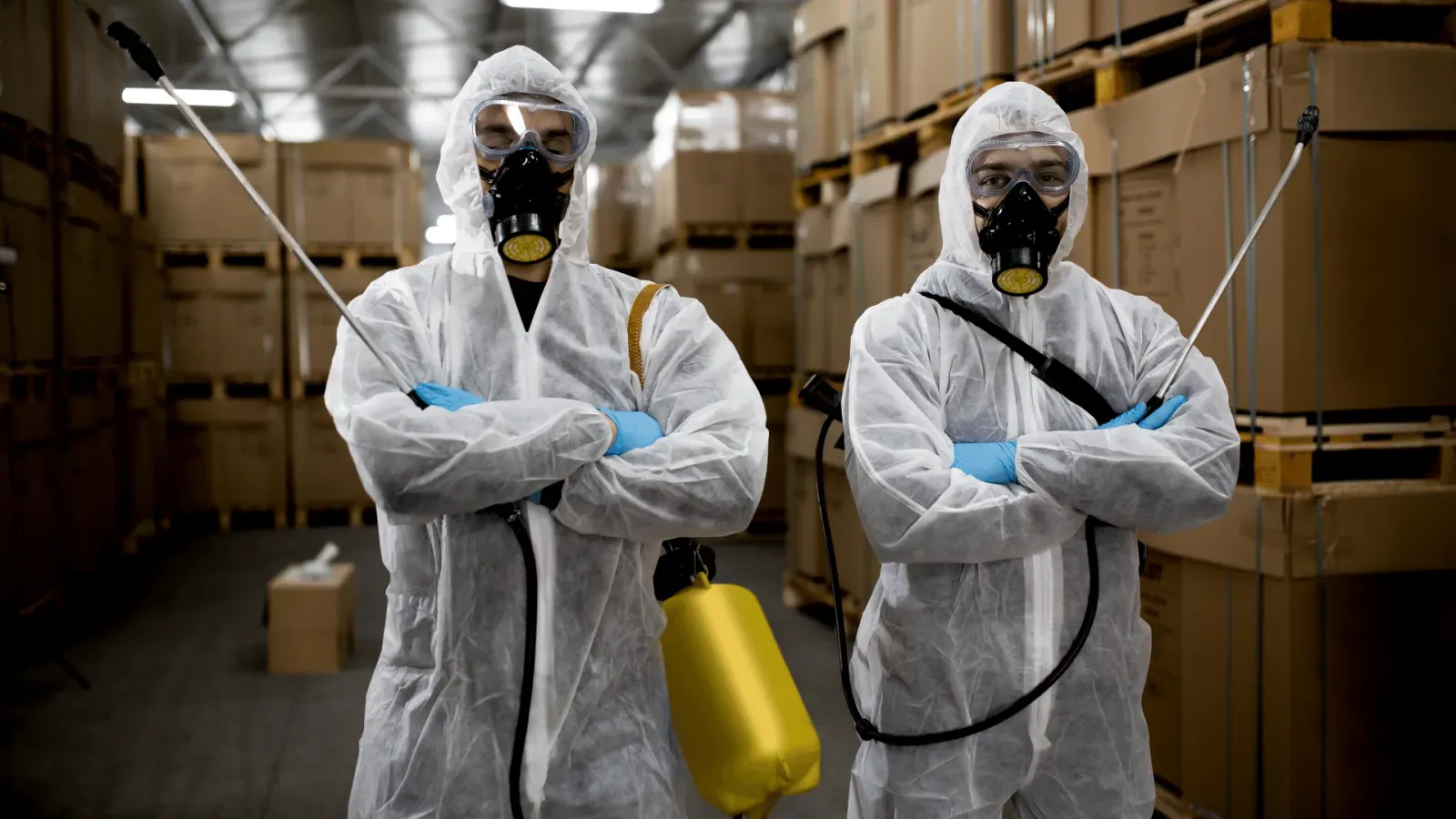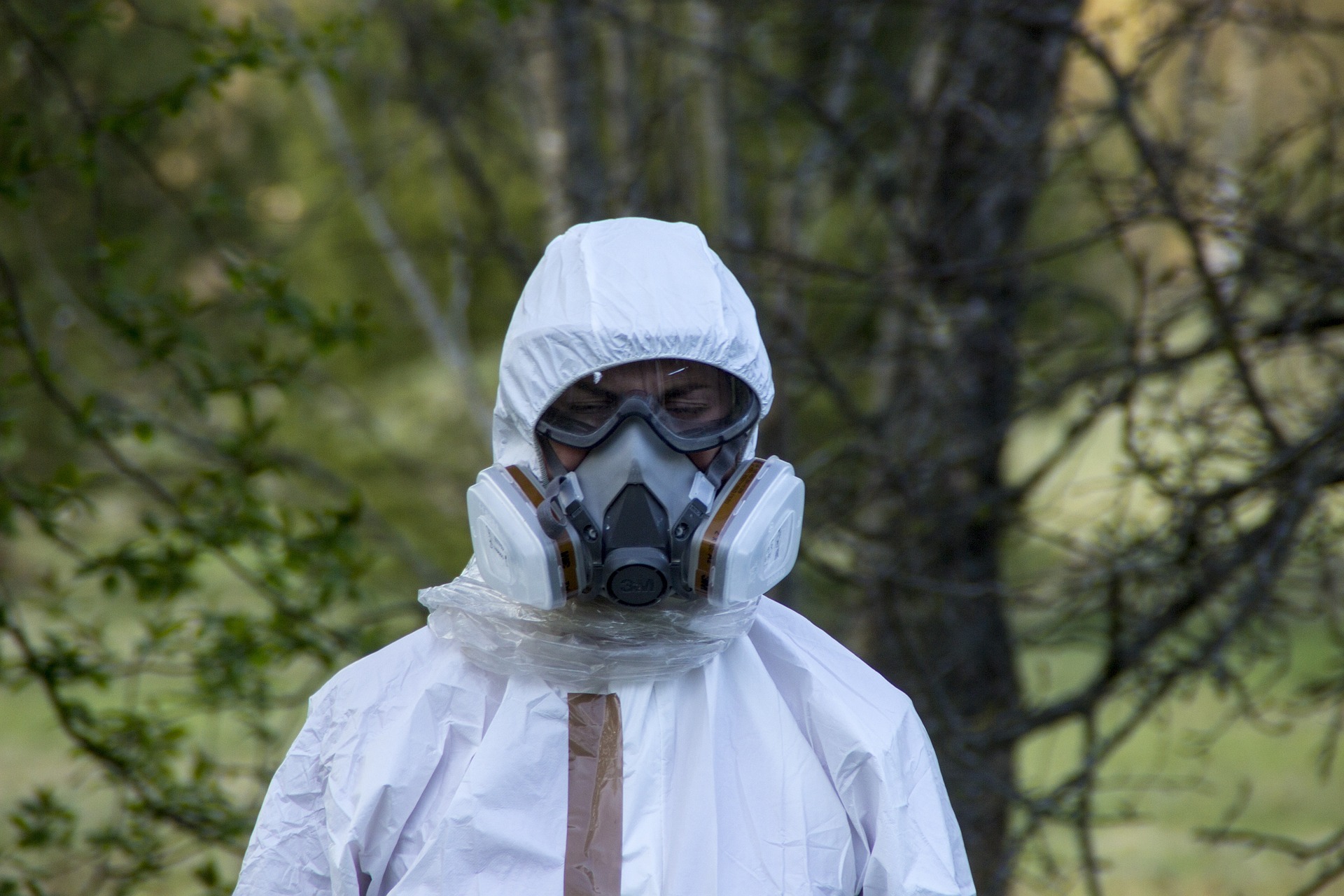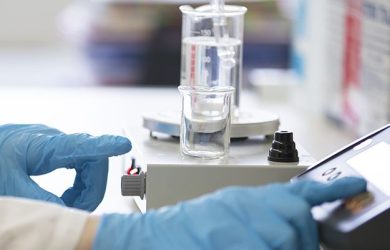Mold Health Effects

![Photo: KGH [CC-BY-SA-3.0 (http://creativecommons.org/licenses/by-sa/3.0/)], via Wikimedia Commons](https://assets-global.website-files.com/633f2109e04e8d3d109d6c32/63402932f231117a3ce850a7_Pulmonary_aspergillosis_1_invasive_type-300x226.jpeg)
Molds can cause diseases in humans and animals. These health effects can result from allergenic sensitivity to mold, from the growth of disease-causing molds in the body, or from ingestion or inhalation of mycotoxins produced by molds. Let’s take a look at the three main types of health effects mold can have on humans.
Hypersensitivity diseases
Exposure to molds can lead to the development of hypersensitivity diseases in humans, including allergic rhinitis and allergic conjunctivitis (red itchy eyes). Mold exposure can also lead to the development of severe hypersensitivity diseases like allergic asthma and hypersensitivity pneumonitis, where the lungs because inflamed from breathing in foreign substances.
Hypersensitivity diseases are by far the most common health effect of molds. Part of the reason for this is that once someone becomes allergic to one type of mold, they will likely have increased sensitivity when exposed to other types of molds. Furthermore, it does not help that even dead mold spores can be allergenic to humans. So while there may be an increase in active mold spores during the spring and fall, inactive spores can stick around and cause problems year-round.
Hypersensitivity symptoms
The symptoms and health effects of mold vary widely from person to person. Some people may experience only mild allergy symptoms, while others can have severe and immediate allergic reactions to mold. Many people who are exposed to mold will experience mild hypersensitivity symptoms such as a runny nose, sneezing fits, or an itchy nose, throat and eyes. In more severe cases, mold allergies can lead to skin rash, flu-like symptoms, infections, severe respiratory disorders, and even the development of asthma. In fact, exposure to mold early on in life has been linked to increased allergy symptoms and is thought to lead to the development of asthma in children.
Toxigenic molds
Toxic mold species produce and emit mycotoxins, which are non-volatile toxic chemical compounds emitted when mold spores reproduce. Mycotoxins can be found in mold colonies, on viable and non-viable mold spores and on other airborne particles.
While not all mold species produce mycotoxins, but those that do can be very toxic to living cells. In fact, some mycotoxins are hazardous enough to hinder the growth of other molds. In most cases, this can lead to serious health effects for humans and animals. Even though mycotoxins concentrations are typically low, long-term, low-level exposure is thought to cause serious health effects including cancer, immunosuppression, neurological effects, damage blood cells and the kidneys and hemorrhagic strokes, as well as other irritation side effects.
The most commonly know toxic mold is Stachybotrys chartarum. Usually referred to in the headlines as “toxic black mold,” Stachybotrys exposure can lead to serious illnesses and symptoms including skin, eye and lung infections, or long-term effects like neurological damage. While black mold is easy to recognize, it’s important to remember that non-black molds can also be toxic and release harmful mycotoxins.
Penicillin, which is a mycotoxin emitted by Penicillium fungi, is one major exception to the rule of harmful mycotoxins. While this mycotoxin is toxic enough to kill living cells, its effects have been harnessed to fight bacterial infections in humans.
Volatile Organic Compounds (VOCs)
Many molds also release microbial volatile organic compounds (VOCs). These chemical compounds are denoted as “volatile” because they are in gas form at normal room temperature. Microbial VOCs are what cause the musty odors that most people associate with mold. While most VOCs are not horribly toxic, long-term, low-level exposure can lead to compounding health problems that develop over time.
Pathogenic Molds
Pathogenic molds cause disease in humans and animals. This process, is also known as mycosis, occurs when viable mold spores colonize inside the body. Pathogenic molds can be divided into two main categories: opportunistic and virulent.
Opportunistic molds
Opportunistic molds target immunocompromised people by colonizing the body when the immune system isn’t fully functional. While these molds can colonize in a person with a competent immune system, they probably won’t cause an infection. The real threat is for people whose immune systems can’t fight off the infection. Opportunistic mold species include Aspergillus flavus, Aspergillus fumigatus and Aspergillus niger, among others.
Virulent molds
Some pathogenic molds are considered to be virulent. These molds can colonize inside a normal human’s body and cause an infection. For example, the mold species Blastomyces dermatitidis can cause an infection called Blastomyces when inhaled, and Histoplasma capsulatum can cause infections in people exposed to contaminated soil. Unlike opportunistic molds, virulent molds do not depend on a weakened immune system to colonize. That said, virulent mold infections are very common in immunocompromised people with especially harsh health effects.
Pathogenic molds are different from toxic molds because they colonize on or inside a person’s body to cause in infection. In contrast, toxic molds colonize organic materials and contribute harmful mycotoxins to indoor environments. So while pathogenic molds can have serious immediate effects on a person’s health, toxic molds can impact health over time and increase their effects with each exposure.
Common mold-related illnesses

Aspergillus fumigatus is a common opportunistic mold species that causes infections in immunocompromised patients. Source: “Aspergillus fumigatus”, Public Domain via Wikimedia Commons
Aspergillosis
Aspergillus is an opportunistic mold that mainly infects immunocompromised patients. People typically develop aspergillosis infections after inhaling airborne Aspergillus spores. Most humans and animals have highly effective immune mechanisms to prevent them from being infected by Aspergillus molds. As such, people with healthy immune systems can inhale millions of Aspergillus spores without any health problems. In contrast, if an immunocompromised person is exposed to even one Aspergillus mold spore they can develop a serious infection. Common opportunistic Aspergillus species include Aspergillus fumigatus, Aspergillus flavus, Aspergillus clavatus, Aspergillus niger and Aspergillus versicolor.
Blastomycosis
Blastomycosis is a virulent infection caused by the species Blastomyces dermatitidis. It is usually acquired by inhaling Blastomyces spores and primarily infects the lungs. While people with competent immune systems can acquire blastomycosis infections, the infections are more severe and more likely to spread to other systems in immunocompromised people. Blastomycosis infections occur most commonly in the eastern half of the United States, but cases have also been diagnosed Africa, Asia and Europe.
Histoplasmosis

Chest X-ray acute pulmonary histoplasmosis PHIL 3954 by CDC/M. Renz – Public Domain via Wikimedia Commons
Histoplasmosis is a virulent fungal infection that develops when people inhale the fungus Histoplasma capsulatum. This fungus is found in the droppings of bats and birds in humid areas and becomes airborne when the soil it resides in is disturbed. While Histoplasma capsulatum grows as a mold in outdoor conditions, it will grow as a yeast when it enters the human body.
Histoplasmosis is one of the most common respiratory fungal infections among humans, in part due to the large geographic area where it’s found. It can be found growing in tropical and subtropical climates around the world and is most commonly found in the Mississippi and Ohio River valleys of the United States.
Because Histoplasma capsulatum resides in soil some occupations, like farmers and landscapers, are more likely to develop Histoplasmosis. Histoplasmosis is usually not serious in people with normal immune systems, but the disease can be fatal if the infection spreads to other parts of the body. Infants and people with compromised Immune systems are more likely to develop serious or fatal infections.
Routes of Exposure
There are four main ways you can be exposed to mold.
- Inhalation: Molds most commonly enter the body when you breathe them in. Most mold spores are small enough that your body’s physical barriers are unable to filter them out of air before they reach your lungs. This explains why many pathogenic molds end up colonizing in the lungs.
- Ingestion: Molds can enter your body if you intentionally or unintentionally eat food contaminated with mold.
- Cutaneous: Some molds will colonize on the skin, hair or nails of people who some in contact with them. Exposure to molds like Aspergillus and Alternaria species can lead to non-invasive colonization of these areas, especially in people with compromised immune systems. In some cases, molds can also enter the body through cuts in the skin.
- Injection: Mold spores can accidentally enter the body during surgical procedures where the internal organs are accessed via a needle-puncture of the skin. This method is called “percutaneous” because mold spores can gain access through punctured skin.
- Absorption: While it is rare, mold spores can be absorbed through the skin or by mucous membranes after they are inhaled.
“The dose makes the poison”
While some molds are more harmful than others, the health effects a person will experience largely depend on the dose or total exposure to mold. Dose depends on both the concentration of the substance and the duration of your exposure.
In some cases, people will be exposed to a large amount of mold spores only a few time in their lifetime. These exposures could occur during construction or renovation work, or if you enter a cold, damp basement with mold growth. More commonly, people will be exposed to low levels of mold in their homes or offices over many years. Both scenarios (one-time high-level exposure or extended low-level exposure) can accumulate over time to reach a threshold level where you’ll start to see health effects.
Risk factors for health effects
We’re exposed to mold spores every day. For some people, this exposure can lead to serious asthma and allergy symptoms. But for the most part, people can go through their day without having to worry about mold too much.
However, there are some factors that put people at an increased risk for serious infections and health effects due to mold exposure. People who are most at risk for mold health effects include:
- Infants and children
- The elderly
- Pregnant women
- People with respiratory conditions (like allergies, asthma and COPD)
- People with weakened immune systems including: people with HIV/AIDS, cancer and organ transplant patients taking immunosuppressant drugs and people with inherited diseases that affect the immune system
- People with chronic diseases such as diabetes, cystic fibrosis and recurring infections
People who fit into these categories can help reduce their risk for health effects from mold by washing their hands regularly, avoiding some plants and foods that are commonly infected with mold, and in some cases taking medication to prevent infections. Making a point to limit time outdoors and in buildings with poor air filtration can also help.
Many pathogenic molds are limited to a certain geographic areas. Healthy bodies will usually develop an immune response for molds commonly found near your home simply due to exposure. But traveling to new areas can leave your body defenseless from exposure to new mold species. As such, immunocompromised people should limit their travel to new areas to reduce their health risk.
Mold & infection control
Hospitals face a unique challenge when it comes to mold. While mold spores are most prevalent outside, they can easily find their way indoors. In other words, opportunistic pathogens can be found just about anywhere. For immunocompromised individuals (like those mentioned above) this can mean big trouble because even just one mold spore can cause an infection. In many cases, these infections can become life-threatening because the body’s defenses are not working like they should.
Healthcare facilities and other facilities that work with immunocompromised people can help protect patients in three ways:
- First, they can control indoor air flow and filter indoor air to remove as many mold spores from indoor air as possible.
- Second, they should be on the lookout for sigs of mold growth or moisture damage that could lead to mold growth. The sooner these problems can be contained and repaired, the better.
- Finally, it’s essential that proper containment measures and air pressurization be used during any sort of maintenance or renovation work. That’s because hidden mold problems are oftentimes uncovered during these activities. Unexpected disturbance of hidden mold can release countless mold spores into the air. If the proper measures aren’t in place, hidden mold can lead to an infection control emergency where many patients acquire construction-related hospital-acquired infections.
related blogs

Why Indoor Air Quality Investigations is a Necessity in These Times?

Few Important Tips to Help You Select Environmental Consulting Services!




